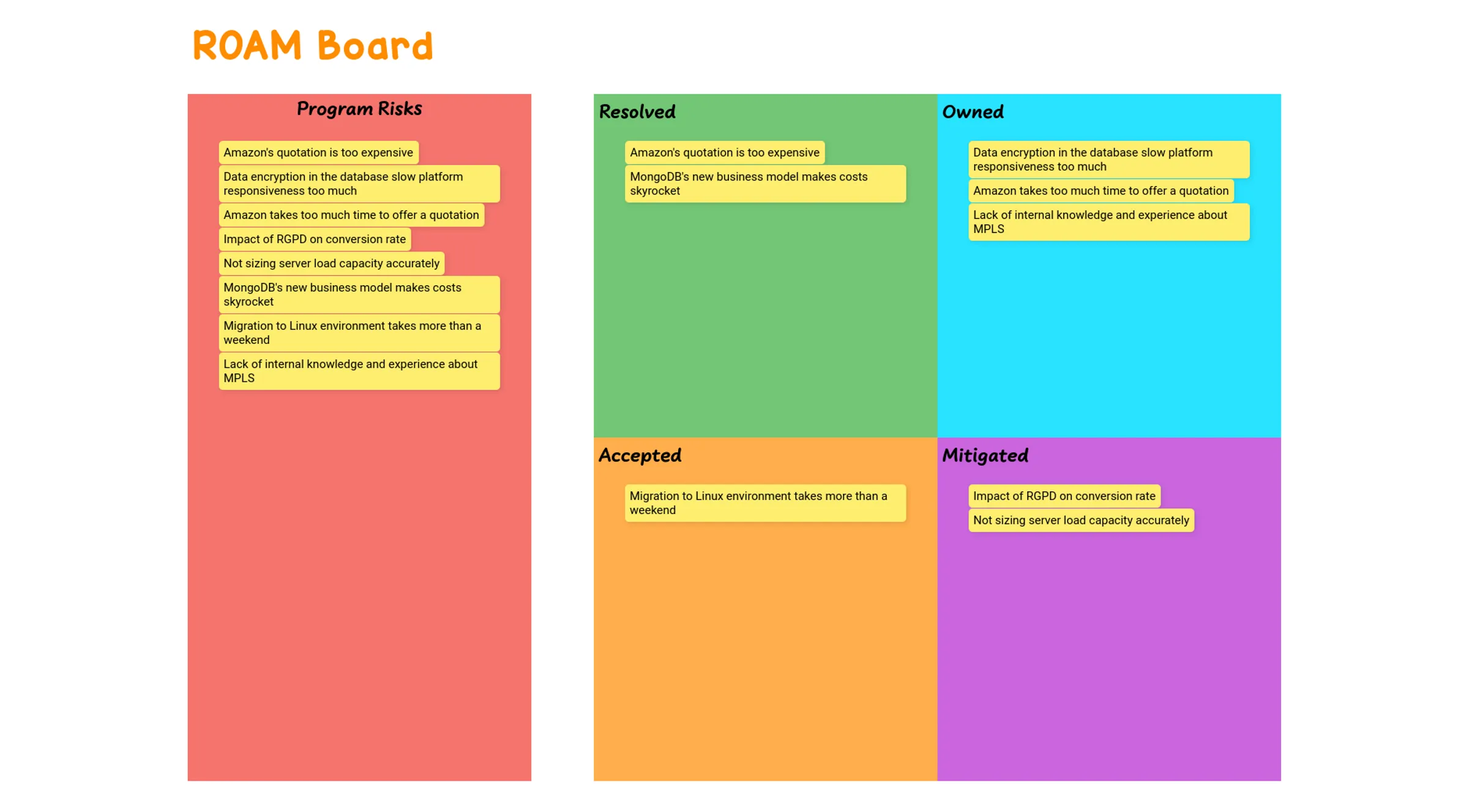ROAM Board

What is the ROAM Board?
The ROAM Board is a risk management tool that is often used as a part of large-scale agility programs, specifically in the SAFe framework. It takes the form of a matrix composed of four quadrants: Resolved, Owned, Accepted, and Mitigated.
The main objective of the ROAM Board is to assist teams in identifying, prioritizing, and addressing potential risks associated with a project.
How to use the ROAM Board?
Completing the ROAM Board generally takes place in 2 steps:
-
Step 1: Identification of risks
The initial stage is to compile a list of all the potential risks that could have an impact on the project’s completion. As a team, the members should brainstorm and identify the risks that could arise.
It’s important to note that during this stage, the risks listed should not be analyzed or evaluated, as this will be done in the subsequent steps. The goal of this step is solely to identify the potential risks.
-
Step 2: Risk categorization
After identifying the risks, the team categorizes them based on their ROAM status which can be one of the following:
- Resolved: This category includes risks that have been successfully resolved and don’t require further action.
- Owned: Risks that fall under this category have been assigned to a specific person or team who is responsible for handling them.
- Accepted: This category is for risks that the team has decided to accept without taking any additional action.
- Mitigated: Risks that fall under this category are the subject of an action plan with the aim of minimizing their potential impact
Tip
To effectively manage risks, you can evaluate them based on two factors: their potential impact on the project and their probability of occurrence. Risks that have a high chance of occurring and could cause significant damage to the project should be given the highest priority and tackled immediately